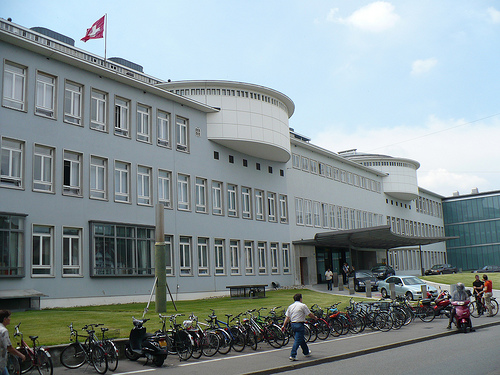From Basel’s City Hospital to the University Hospital
The unique blend of academic teaching and research with practical training that is found today at Basel’s University Hospital emerged during the nineteenth century, when completing a university degree became a prerequisite for a medical career. The term “University Hospital,” however, only came into official use in the twenty-first century.
Although the Faculty of Medicine was among the university’s four initial faculties, medical teaching was at first purely theoretical, focusing on the classic texts of Galen and Hippocrates. Meanwhile, practical medical care for the population, including patient treatment, was in the hands of surgeons and specialists without a university background.
The hospital originally served to provide shelter and care for indigent patients, offering little in the way of medical treatment. In the early seventeenth century, Felix Platter, a city physician in Basel, aimed to introduce “clinical teaching” at the City Hospital. This initiative allowed medical students to engage regularly in patient visits, a move encouraged by the Faculty of Medicine. For a brief period, the City Hospital became a key site for practical medical education. However, this interest in hands-on training soon waned.
By the nineteenth century, medicine was increasingly underpinned by experimental research, evolving into a natural science, with university education becoming the sole gateway to the medical profession. Consequently, hospitals once again became crucial for clinical training. In 1865, an agreement known as the “clinic contract” was signed between the City Hospital and the University of Basel, requiring the hospital to support education and research and tasking the canton with providing financial backing and overseeing hospital expansion. Thus, the City Hospital was transformed into the Cantonal Hospital, although it continued to be known by this older designation for some time. It wasn’t until 2004 that it officially adopted the title of University Hospital.



